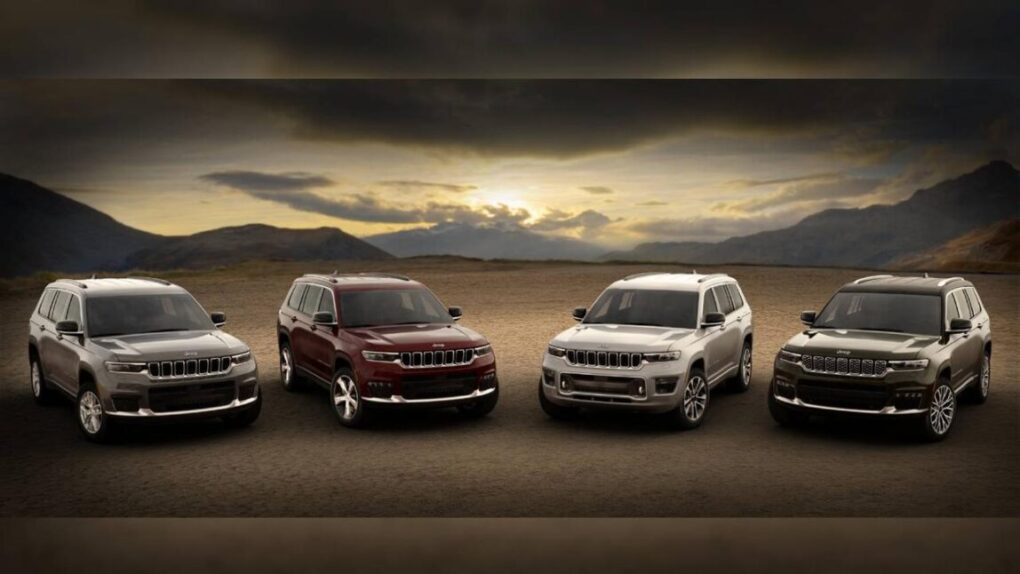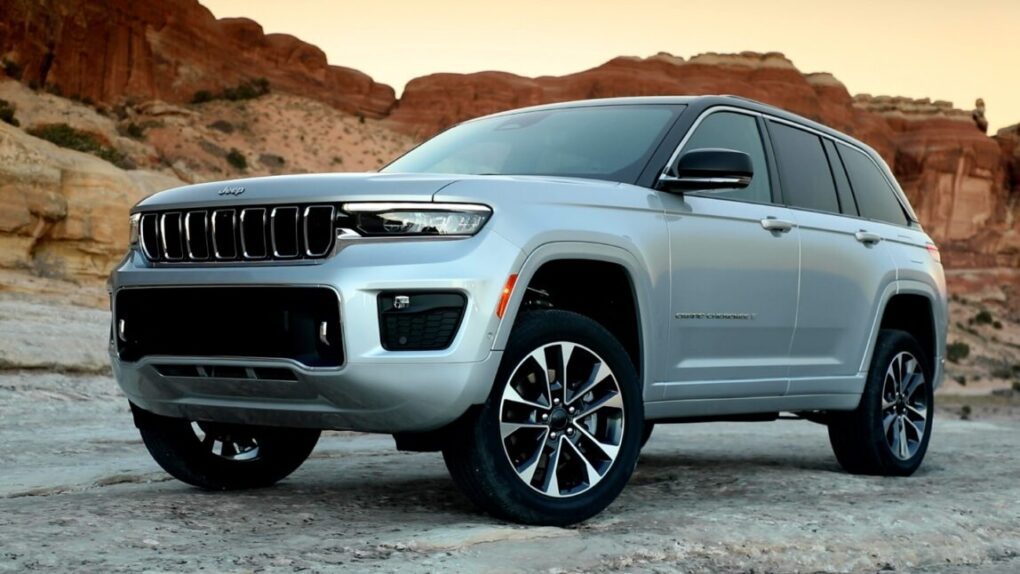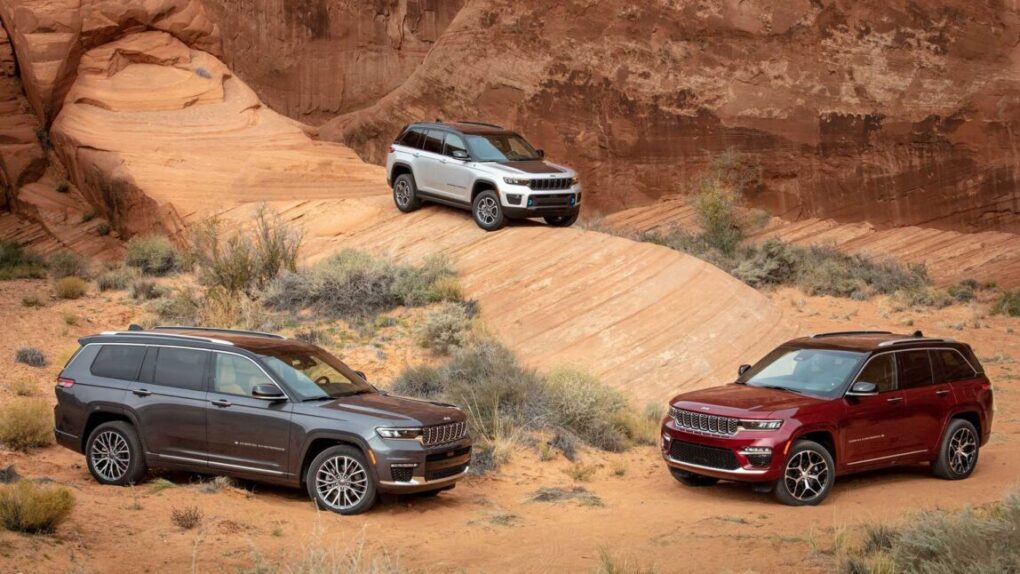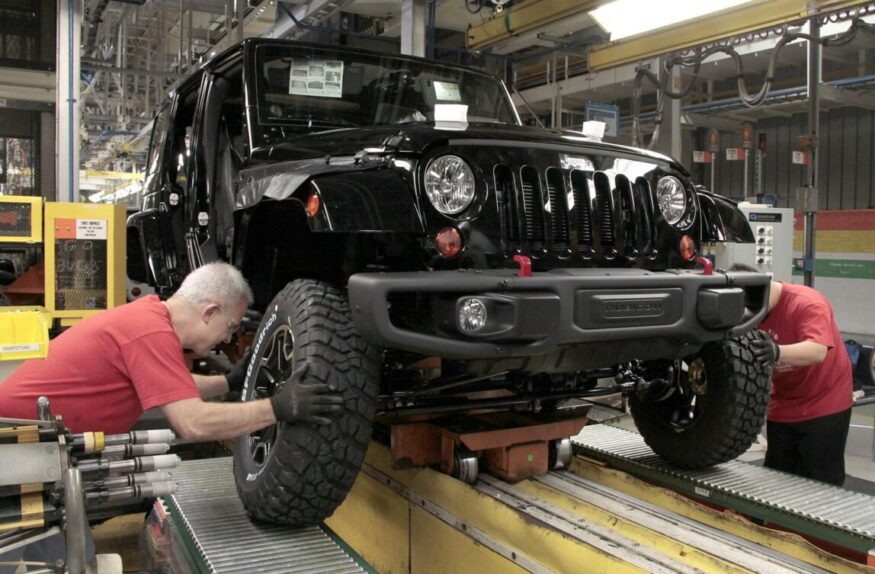Table Of Contents [show]
Overview of the Jeep manufacturing process and its complex supply chain
Jeep vehicles are manufactured using a complex and intricate process that involves multiple suppliers and a global supply chain. The process begins with the design and engineering of the vehicle, which is done by the Jeep team in close collaboration with various suppliers.
The culmination of the design phase signals the commencement of the manufacturing process at one of the multifarious Jeep production sites scattered across the globe. These enclaves of manufacturing prowess bear the onus of assimilating the sundry components of the automobile, ranging from the corporeal form to the skeletal framework, the powerhouse to the gearbox, into a coherent and functional whole.
The manufacturing process for Jeep vehicles represents an intricate dance between automated processes and human ingenuity, relying on sophisticated robotics and precision machinery to achieve a level of precision that borders on the sublime. The manifold components that comprise these automotive marvels are woven together in a symphony of engineering expertise, each element meticulously examined and verified to ensure that it meets the most exacting of quality standards. At each stage of the manufacturing journey, Jeep vehicles are subjected to rigorous trials and tribulations, tests of endurance and fortitude that push them to their limits and beyond, forging a product that embodies the very essence of safety and performance.
The culmination of the manufacturing process heralds the initiation of the next chapter in the odyssey of the Jeep vehicle, a journey that sees it shipped to dealerships scattered across the globe. Here, it takes on a new mantle, one of promise and potential, beckoning to intrepid adventurers who seek to tame the wild and rugged terrain that lies before them. With its blend of tenacity and reliability, the Jeep vehicle stands as a testament to human ingenuity and engineering excellence, a beacon of hope and adventure for those who dare to dream of exploration and discovery. It is a vehicle that can surmount the most daunting of driving conditions, a veritable juggernaut that reigns supreme over the rugged landscape, inspiring awe and admiration in all who behold it.
The Jeep brand stands as a testament to the power of human ingenuity and collective effort, a tapestry of intricate interconnectivity that links a vast array of suppliers and logistics providers in a web of logistical prowess. Each of these constituent elements plays a critical role in the manufacture of these automotive marvels, providing the various components that comprise the vehicle in a dance of intricate choreography that demands the highest levels of quality and reliability. The seamless integration of these diverse entities is no small feat, requiring a complex matrix of constant monitoring and management to ensure that every piece of the puzzle falls neatly into place, and the Jeep vehicle continues to uphold the exacting standards that have made it a symbol of rugged dependability and automotive excellence.
The ownership of Jeep
Jeep’s history of ownership changes over the years
Jeep has gone through a number of ownership changes over the years, beginning with its original parent company, Willys-Overland. In 1953, the company was bought out by Henry J. Kaiser, who renamed it Kaiser-Jeep. In 1970, American Motors Corporation (AMC) acquired Kaiser-Jeep, and Jeep became a division of AMC.
In 1987, Chrysler Corporation acquired AMC and with it, the Jeep brand. Under Chrysler’s ownership, Jeep continued to grow and expand its product line, introducing new models like the Grand Cherokee and Wrangler.
The annals of Jeep history are replete with tales of mergers and acquisitions, a saga that spans continents and cultures in a symphony of global cooperation and interconnectivity. One such chapter began in 1998 when American automotive giant Chrysler joined forces with its German counterpart Daimler-Benz to create the entity known as DaimlerChrysler, a bold new venture that promised to redefine the boundaries of automotive excellence. Jeep, that iconic symbol of rugged durability and adventure, was swept up in the tidal wave of change, becoming an integral part of the new conglomerate. Alas, this grand vision was not to be, and the merger was fraught with difficulties, leading Daimler to sell Chrysler to the private equity firm Cerberus Capital Management in 2007, marking the end of one chapter and the beginning of another in the history of this indomitable brand.
Cerberus owned Chrysler for only a short time before the company declared bankruptcy in 2009. As part of the bankruptcy proceedings, Italian automaker Fiat acquired a controlling stake in Chrysler and merged with the company to form Fiat Chrysler Automobiles (FCA).
Current ownership under Stellantis, the multinational automotive corporation
In 2021, FCA merged with French automaker PSA Groupe to form Stellantis, a multinational automotive corporation that is now the parent company of Jeep. Stellantis is headquartered in Amsterdam and has a presence in over 30 countries, with 14 brands under its umbrella, including Jeep, Dodge, Chrysler, Fiat, Peugeot, and Citroen.

With its recent integration into the massive Stellantis conglomerate, the Jeep brand finds itself positioned at the vanguard of automotive innovation and excellence, poised to draw upon a veritable cornucopia of resources and expertise that span the globe. This vast pantheon of cutting-edge technology and research and development capabilities serves as a potent reminder of the limitless potential that lies at the fingertips of those who dare to dream big and work tirelessly to bring those dreams to fruition. With a commitment to supporting and nurturing the Jeep brand at every turn, Stellantis is investing heavily in the development of new and exciting products that promise to revolutionize the automotive landscape, marking a bold new chapter in the ongoing evolution of this iconic symbol of adventure and exploration.
Under Stellantis ownership, Jeep is poised for continued growth and success, with a strong focus on innovation, quality, and customer satisfaction. The brand remains an iconic American automotive brand, known for its rugged, off-road capable vehicles that embody the spirit of adventure and exploration.
Review of the future of Jeep
One user’s opinion on the future of Jeep:
“FCA imho is incredibly mismanaged. doubt it will be much different under stellaris. Peugeots are awful cars. Nearly as bad as the fiats. Alfa Romeo is shoddily built and incredibly unreliable. masarati is the poor mans ferrari that is a quarter of the price and dog ugly. Fun fact my wife test drove a Alfa Romeo suv and it broke down on the test drive. Something gave in the transmission while we were merging into traffic. With COVID they let you take the car without a dealer with you. we had to push the POS to the side. Than wait 90mins for the dealer to get a flatbed to haul it off. Needless to say wife didn’t buy it.”
Jeep manufacturing facilities
Overview of the global locations of Jeep manufacturing facilities
Jeep vehicles are manufactured at various locations around the world, with production facilities in North America, Europe, Asia, and South America. Some of the major production facilities include:
Toledo Assembly Complex (Ohio, USA)
Belvidere Assembly Plant (Illinois, USA)
Sterling Heights Assembly Plant (Michigan, USA)
Toluca Assembly Plant (Mexico)
Goiana Assembly Plant (Brazil)
Melfi Assembly Plant (Italy)
Kragujevac Assembly Plant (Serbia)
Nanchang Assembly Plant (China)
Ranjangaon Assembly Plant (India)
Behold the wondrous Jeep manufacturing facilities, those vast and sprawling edifices of industry that loom large on the horizon, beacons of hope and progress in a world that is ever-changing and relentlessly demanding. Within these hallowed halls, a dizzying array of components are assembled, each one a vital cog in the grand machine that is the Jeep vehicle. From the sturdy body to the powerful engine, from the sleek chassis to the intricate transmission, every part must be expertly crafted and meticulously aligned in order to achieve the perfect harmony that characterizes the Jeep brand. It is a complex and demanding process, one that relies heavily on the latest advances in automation and robotics to ensure that every element is assembled with the utmost precision and care, all in service of creating a product that is truly world-class.
Description of the manufacturing process and the various components that go into a Jeep
The manufacturing process for Jeep vehicles begins with the design and engineering of the vehicle. Once the design is finalized, the manufacturing process begins at one of the many Jeep manufacturing facilities around the world.
Let us delve into the captivating world of Jeep manufacturing, where the magic truly begins with the precise and intricate process of stamping the various body panels that will eventually form the foundation of each vehicle. With an almost hypnotic rhythm, the panels are welded together, each seam a testament to the incredible skill and expertise of the craftsmen who labor tirelessly to bring these magnificent machines to life. Once the body has been painstakingly assembled, it is given a sumptuous coat of paint that gleams like the sun on a clear day, and is then spirited away to the bustling assembly line, where it is joined by a plethora of other critical components, including the engine, transmission, suspension, and electrical systems. It is a true symphony of technology and engineering, each part working in perfect harmony to create a vehicle that is as capable as it is beautiful, a testament to the enduring legacy of the Jeep brand.

The assembly process at Jeep is a breathtaking display of technological prowess, with advanced robotics and precision machinery working in concert to bring each vehicle to life with incredible accuracy and attention to detail. Every bolt, every screw, every wire is carefully placed and secured, each component meticulously tested and calibrated to ensure that it performs flawlessly. The entire process is a veritable ballet of engineering and innovation, a symphony of whirring machines and flashing lights that combine to create something truly remarkable. And it doesn’t stop there – each and every vehicle undergoes a battery of tests and inspections throughout the manufacturing process, ensuring that it not only meets but exceeds the highest safety and performance standards. It’s a testament to the unwavering commitment to quality that has made the Jeep brand a household name for generations.
After the complex and sophisticated assembly process, each Jeep vehicle is subject to rigorous quality control measures. These measures ensure that the vehicle is in line with all the necessary specifications and quality standards. Once the inspection is complete, the Jeep is ready to hit the road and tackle any terrain that comes its way. From icy mountains to scorching deserts, Jeep’s reputation for rugged reliability makes it a popular choice among drivers worldwide. These vehicles are then shipped to dealerships across the globe, where they are eagerly awaited by customers seeking the ultimate driving experience.
The various components that go into a Jeep include:
Body panels
Chassis
Engine
Transmission
Suspension
Electrical systems
Tires
Interior components, such as seats, dashboard, and audio system
The meticulous design and engineering of each component ensure that they meet the rigorous standards of the Jeep brand. These components are then carefully assembled and put to the test to ensure their seamless function, providing the ultimate driving experience for Jeep enthusiasts worldwide.
Who Manufactures Jeep: The supply chain of Jeep
Overview of the complex network of suppliers and logistics involved in Jeep manufacturing
The labyrinthine manufacturing process of Jeep vehicles involves a vast and intricate network of suppliers and logistics providers that spans the entire planet. The supply chain for Jeep vehicles encompasses suppliers of a multitude of components, including engines, transmissions, axles, tires, and electrical systems. These diverse and crucial components are then shipped to various assembly plants located around the world, where they are carefully combined with other parts to create the final product.
Jeep’s supply chain is a highly complex and intricate web of suppliers and logistics providers that spans the globe. With a multitude of components sourced from various suppliers worldwide, managing this labyrinthine supply chain demands a highly-coordinated and synchronized effort between Jeep and its suppliers. This is compounded by the need for a robust logistics infrastructure to ensure that components arrive promptly and in the correct quantities.
To manage the supply chain effectively, Jeep relies on advanced technologies and systems that allow for real-time tracking of components and shipments. This helps to ensure that production lines remain operational and that vehicles are manufactured efficiently and to the highest quality standards.
Discussion of the importance of supply chain management in ensuring the quality and reliability of Jeep vehicles
The proper management of Jeep’s supply chain is an absolute must when it comes to guaranteeing the quality and dependability of their vehicles. Any disturbances or holdups in the supply chain could potentially result in setbacks to production, defects in quality, and ultimately negative repercussions on customer contentment.
To manage its supply chain effectively, Jeep works closely with its suppliers to establish clear communication channels and ensure that all parties are aligned on production schedules, delivery timelines, and quality standards. This allows Jeep to maintain a high level of visibility into its supply chain and quickly address any issues that arise.
Jeep’s logistics infrastructure is not to be trifled with, as it boasts advanced tracking technologies and a highly coordinated transportation network. This ensures that the delivery of components is punctual and precise, reducing the likelihood of production disruptions or quality concerns. In addition to nurturing strong relationships with suppliers, Jeep’s logistics infrastructure serves as an extra layer of assurance for the timely delivery of the necessary components.
Jeep’s supply chain management is pivotal to the triumph of the brand. The coordination between Jeep and its suppliers is essential in ensuring that its vehicles are built promptly, meeting the highest quality criteria and are delivered to customers at the right time and in pristine condition. By maintaining a robust logistics infrastructure and implementing cutting-edge tracking technologies, Jeep can minimize the possibility of production delays or quality problems, thereby enhancing the satisfaction of its customers.
Jeep’s impact on the automotive industry
Discussion of Jeep’s contributions to the development of the SUV segment
With its impressive legacy, Jeep has made a significant impact on the SUV (sport utility vehicle) segment. For years, the brand has been renowned for creating tough, off-road vehicles that are able to navigate through different terrains and conditions with ease.
Jeep’s groundbreaking designs and engineering have had a transformative effect on the SUV (sport utility vehicle) industry. With the introduction of the Jeep Cherokee in 1984, the brand revolutionized the market and paved the way for the development of the crossover SUV, which seamlessly blends the best features of both cars and traditional SUVs. Today, Jeep’s innovative approach to vehicle design and engineering has established it as a true leader in the competitive SUV market.
Jeep is constantly pushing the limits and innovating in the SUV market. With advanced technologies, high-performance engines, and sophisticated suspension systems, Jeep vehicles can handle a broad range of driving conditions. The brand is always looking for ways to improve and enhance its vehicles, making them even more capable and reliable than ever before.
Analysis of Jeep’s role in the competitive landscape of the automotive industry
Jeep’s trailblazing efforts in the SUV market have propelled it to the forefront of the highly competitive automotive industry. Its unwavering commitment to crafting exceptional, dependable vehicles has earned it a steadfast and devoted fan base, as well as the admiration of industry professionals worldwide.
Jeep’s dominance in the SUV market has faced fierce challenges in recent times as an influx of rivals attempts to establish themselves. Nevertheless, the brand’s ability to constantly innovate and pivot in the face of evolving market trends has allowed it to introduce cutting-edge models and features that appeal to a diverse group of consumers.

Jeep’s success in the SUV segment has also helped to drive innovation and competition in the wider automotive industry. Other automakers have been forced to respond to Jeep’s success by developing their own SUV models and investing in new technologies and features that can compete with those offered by Jeep.
Overall, Jeep’s impact on the automotive industry has been significant, both in terms of its contributions to the development of the SUV segment and its role in shaping the competitive landscape of the industry as a whole. The brand’s commitment to innovation and quality has helped to establish it as a leader in the market and a driving force for change and progress.
Future of Jeep manufacturing
Overview of Jeep’s plans for future manufacturing and production
Jeep is charging ahead with big plans for the future of its manufacturing and production operations. The brand has set its sights on introducing a slew of new models and features in the near future, including cutting-edge electric and hybrid vehicles, sophisticated autonomous driving technologies, and other game-changing innovations that promise to shake up the automotive industry.
In addition to these new models and technologies, Jeep is also focused on improving its manufacturing processes and supply chain management systems. The brand is investing heavily in automation and robotics, with the goal of improving efficiency and reducing costs while maintaining high quality standards.
Jeep’s future plans are nothing short of impressive, as the brand is looking to take its manufacturing and production operations to new heights. Jeep has already teased exciting new models and features that are set to hit the market soon, including electric and hybrid vehicles, advanced autonomous driving technologies, and other industry-disrupting innovations. But the brand’s ambitions don’t stop there, as it is also looking to expand its global reach and presence, with a particular focus on key regions such as Europe and Asia. By pursuing these bold strategies, Jeep aims to cement its status as a leading player in the fiercely competitive global automotive industry.
Discussion of the challenges and opportunities facing the brand in the rapidly changing automotive industry
The rapidly changing automotive industry presents both challenges and opportunities for Jeep. On the one hand, the brand must navigate a rapidly evolving market landscape, with changing consumer preferences and the rise of new technologies such as electric and autonomous vehicles.
At the same time, however, the shift towards electrification and other advanced technologies also presents new opportunities for Jeep. The brand has already announced plans to introduce a range of new electric and hybrid models, and is investing heavily in the development of advanced technologies such as autonomous driving systems.
Jeep also faces challenges in managing its complex global supply chain, which must deliver high-quality parts and components to manufacturing facilities around the world. The brand must continue to invest in supply chain management systems and work closely with suppliers to ensure that quality standards are maintained and costs are kept under control.
Jeep’s future in manufacturing is looking optimistic and bright, with the brand holding a strong position to continue pushing boundaries and taking the lead in the global automotive industry. By investing in cutting-edge technologies, refining manufacturing processes, and broadening its global footprint, Jeep is poised to successfully navigate the complex and dynamic market conditions of today and tomorrow.
Who Manufactures Jeep: FAQ
Q: What is Jeep and how did it become an iconic brand?
A: Jeep, a premier American automotive marque, is renowned for crafting top-of-the-line SUVs and off-road vehicles. Its genesis can be traced back to its military usage during World War II, which later gained popularity among civilians due to its durable and adaptable design. As time passed, Jeep became synonymous with dependability and excellence, cementing its place as a legendary brand in the automotive domain.
Q: Who currently owns Jeep?
A: Jeep is now under the ownership of Stellantis, a colossal multinational automotive corporation that was born from a merger between Fiat Chrysler Automobiles (FCA) and PSA Group.
Q: Where are Jeep vehicles manufactured?
A: Jeep vehicles are manufactured at various locations around the world, including the United States, Mexico, Brazil, Italy, and China. The brand has a global network of manufacturing facilities that are responsible for producing various models and components.
Q: What is the manufacturing process for Jeep vehicles?
A: With a multitude of intricacies involved, the manufacturing process for Jeep vehicles is a marvel of modern engineering. The process is comprised of numerous steps, including stamping, welding, painting, and assembly, each requiring a unique set of skills and specialized equipment. Only through this meticulous attention to detail can Jeep vehicles achieve the exceptional quality and performance that the brand is renowned for.
Q: What is the supply chain for Jeep vehicles?
A: The supply chain for Jeep vehicles involves a network of suppliers and logistics providers that are responsible for delivering high-quality parts and components to manufacturing facilities around the world. Effective supply chain management is critical to ensuring that Jeep vehicles are produced efficiently and to the brand’s high quality standards.
Q: What is the future of Jeep manufacturing?
A: Jeep is blazing a trail in the automotive industry by investing heavily in cutting-edge technologies, optimizing manufacturing processes, and broadening its global footprint. The brand is revving up to unveil a dazzling range of electric and hybrid models that boast incredible features and advanced capabilities. Additionally, Jeep is pouring resources into developing high-tech autonomous driving systems that will revolutionize the way we navigate the roads. With this unflagging commitment to innovation and progress, Jeep is poised to reign supreme as a trailblazer in the dynamic and fast-paced world of automotive manufacturing.
Brief history of Jeep and its iconic status as an American automotive brand
Jeep is an iconic American automotive brand that has been around for over 80 years. It all began in 1940 when the U.S. Army was looking for a vehicle that could handle rugged terrain and serve as a versatile military vehicle during World War II. The American Bantam Car Company, Ford, and Willys-Overland all submitted prototypes, and the Willys MB was eventually chosen for production.
Jeep’s post-war journey began with the production of a civilian version of the Jeep, the CJ-2A, by the Willys-Overland company. It quickly became a hit among the farming, ranching, and outdoor communities. From there, the brand’s popularity continued to soar as it introduced various models like the iconic Wrangler, the reliable Cherokee, and the luxurious Grand Cherokee.
Jeep is a world-renowned brand that symbolizes adventure, innovation, and off-road capabilities. Its rugged vehicles have become a coveted symbol of American ingenuity, with a loyal following of enthusiasts spanning across the globe. Jeep vehicles embody the spirit of exploration and the thrill of the unknown, making them a must-have for anyone seeking adventure and excitement.
Conclusion
Recap of the key points covered in the article
In this mind-bending article, we delved into the intricacies of Jeep’s manufacturing process, dabbled in the enigmatic history of its ownership changes, wandered the globe to visit Jeep’s manufacturing facilities, peered into the complex web of suppliers and logistics that underpin Jeep’s manufacturing prowess, and marveled at Jeep’s far-reaching impact on the automotive industry. We also explored Jeep’s ambitious plans for the future of its manufacturing and production operations, and contemplated the daunting challenges and exhilarating opportunities that await Jeep in the ever-evolving automotive industry.
Who Manufactures Jeep: Final thoughts on the significance of Jeep as a brand and its place in the automotive industry
Jeep, the legendary American automotive brand, has amassed a devoted fan base worldwide. Renowned for its versatile and durable vehicles, Jeep has had a profound impact on the SUV sector and has established itself as an industry leader through its unwavering dedication to quality and innovation.
With the ever-evolving automotive industry, Jeep encounters a mix of hurdles and prospects. Nevertheless, the brand’s concentration on investing in new technologies, refining manufacturing processes, and broadening its worldwide reach places it advantageously for the future. With a rich history and an indomitable reputation for quality and dependability, Jeep is bound to retain its significance as a vital player in the global automotive industry for many years.


